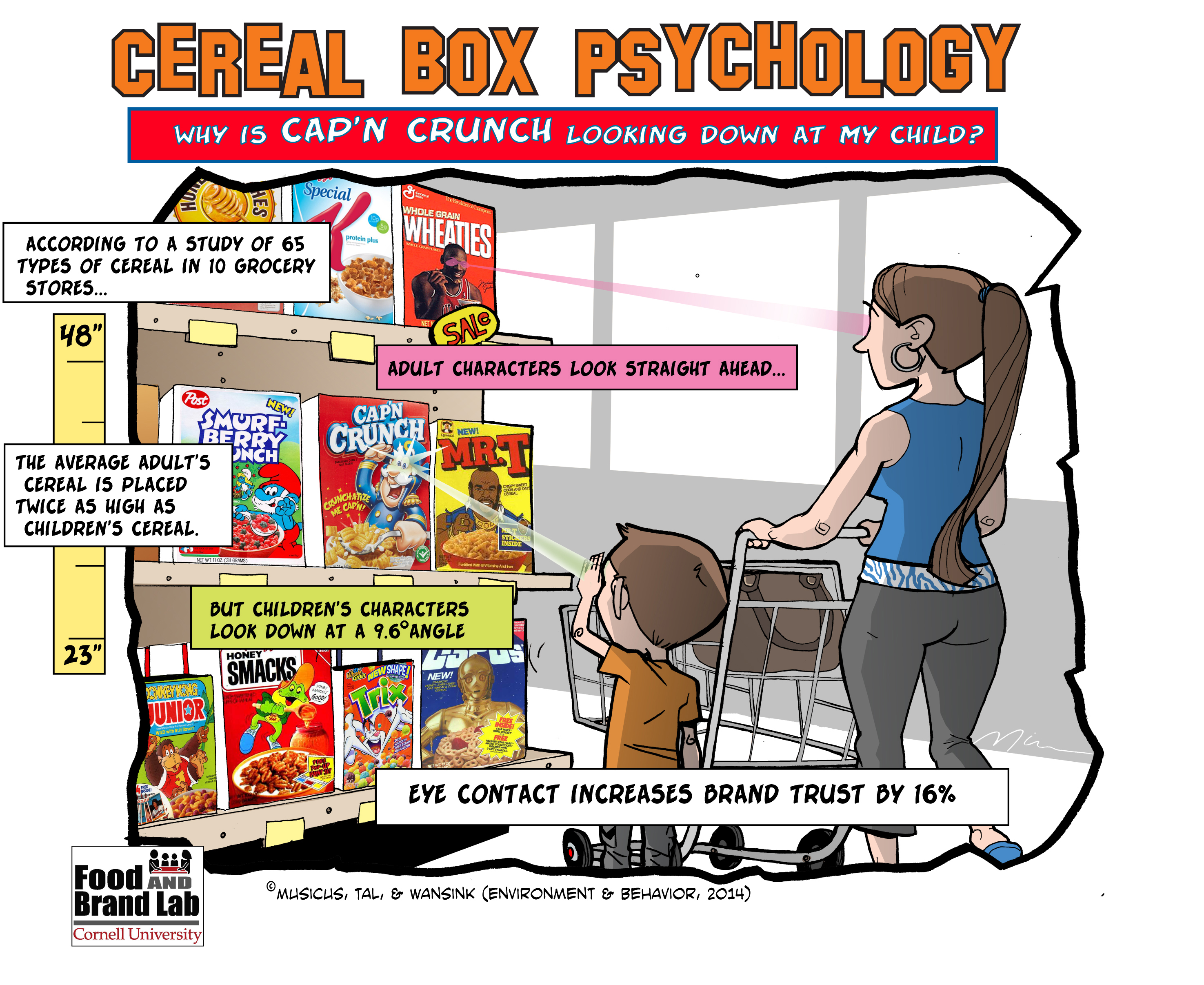Cereal Mascots Earn Sales with Eye Contact

Yes, kids, Cap'n Crunch is looking at you. And so are the Trix rabbit, Toucan Sam and Tony the Tiger.
The mascots on boxes of cereal advertised to children tend to stare downward to catch the gaze of kids. Why? Eye contact helps increase feelings of trust in a brand, a new study suggests.
Researchers from the Cornell Food and Brand Lab studied 86 cereal-box mascots in 10 grocery stores in New York and Connecticut. They found that the boxes are strategically positioned in the breakfast aisle. On average, kids' cereal boxes are placed at a shelf height of 23 inches (58 centimeters), while adult cereals tend to sit 48 inches (122 cm) up.
Kids' cereal boxes also feature mascots whose eyes are pointed downward at an average angle of 9.6 degrees, the study researchers found. But the spokes-characters on boxes of adult cereal — like the athletes on boxes of Wheaties — tend to look almost straight ahead, at an average 0.43-degree upward angle, the researchers say. [10 Ways to Promote Kids' Healthy Eating Habits]
This means that, at a distance of 4 feet (1.2 meters) from the shelf, kids' cereal mascots would make incidental eye contact with kids, while adult cereal spokes-characters were more likely to catch the eyes of adults, the researchers say.
"If you have eye contact with something, even if it's somebody on a box, it looks more trustworthy," Food and Brand Lab Director Brian Wansink said in a video explaining the findings.
Wansink and colleagues conducted a second study showing this eye-contact tactic really does work. They asked 63 people from a private northeastern university to look at a box of Trix and rate their feelings of trust and connection to the brand. Some participants were given a version of the box that featured a white rabbit looking straight ahead at the viewer. A second version had a rabbit that looked down.
Sign up for the Live Science daily newsletter now
Get the world’s most fascinating discoveries delivered straight to your inbox.
Participants who had eye contact with the rabbit reported 16 percent more brand trust and a 28 percent greater feeling of connection to the brand, compared with participants given a box of Trix with a rabbit that didn't look right at them, the researchers said. The participants who made eye contact with the goofy rabbit even said they liked Trix better, compared with another cereal.
Other traits may also influence how people feel about a cereak brand (such as whether the mascot is an animal or human), though this study didn't explore those factors.
"I would say the more anthropomorphic a character is, the more positive you would feel about it," another Cornell researcher on the project, Aner Tal, told Live Science in an email. "You would empathize more with a monkey than with a tree or a stone — that's why spokes-characters are often animals that are made to look very human. And in general you want spokes-characters, whether animated or human, to match the product you advertise."
The results suggest that parents trying to keep sugary cereals out of their kids' diet should avoid the breakfast aisle altogether when shopping with their children, Wansink said.
"A second takeaway could also be for well-meaning companies that want people to eat better," Wansink added in the video. Perhaps those companies could borrow this marketing strategy and adopt a mascot that stares down at their intended consumers, he said.
Editor's note: This story was updated at 5:35 p.m. EDT to add comments from another researcher on the study.
Follow Megan Gannon on Twitter and Google+. Follow us @livescience, Facebook & Google+. Original article on Live Science.










